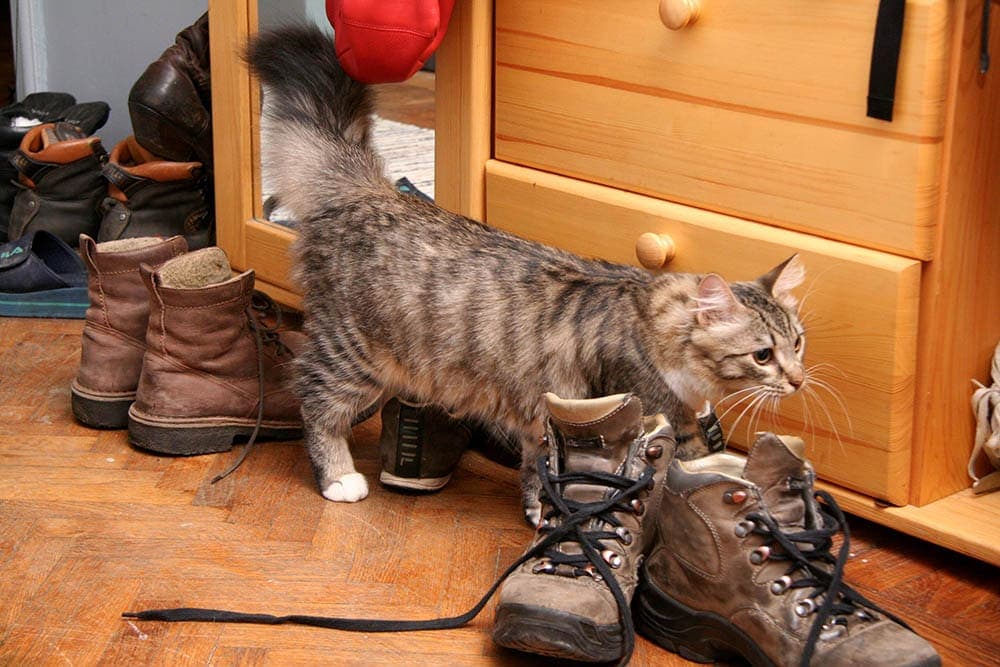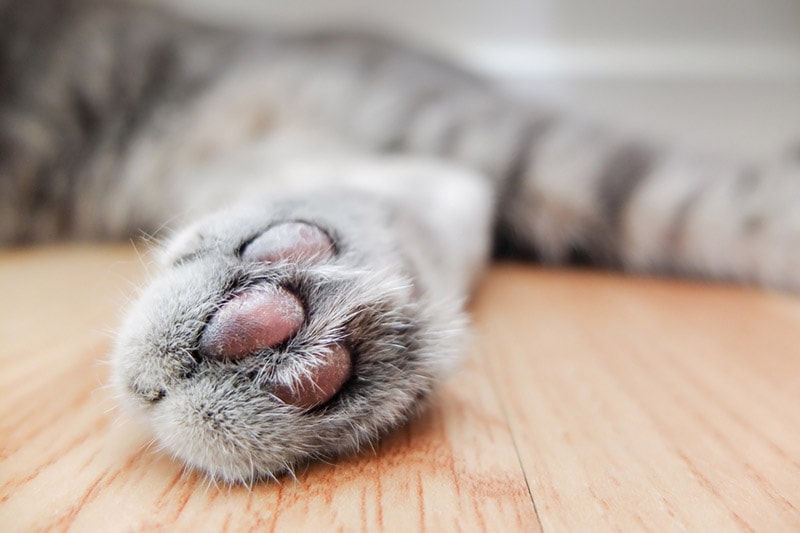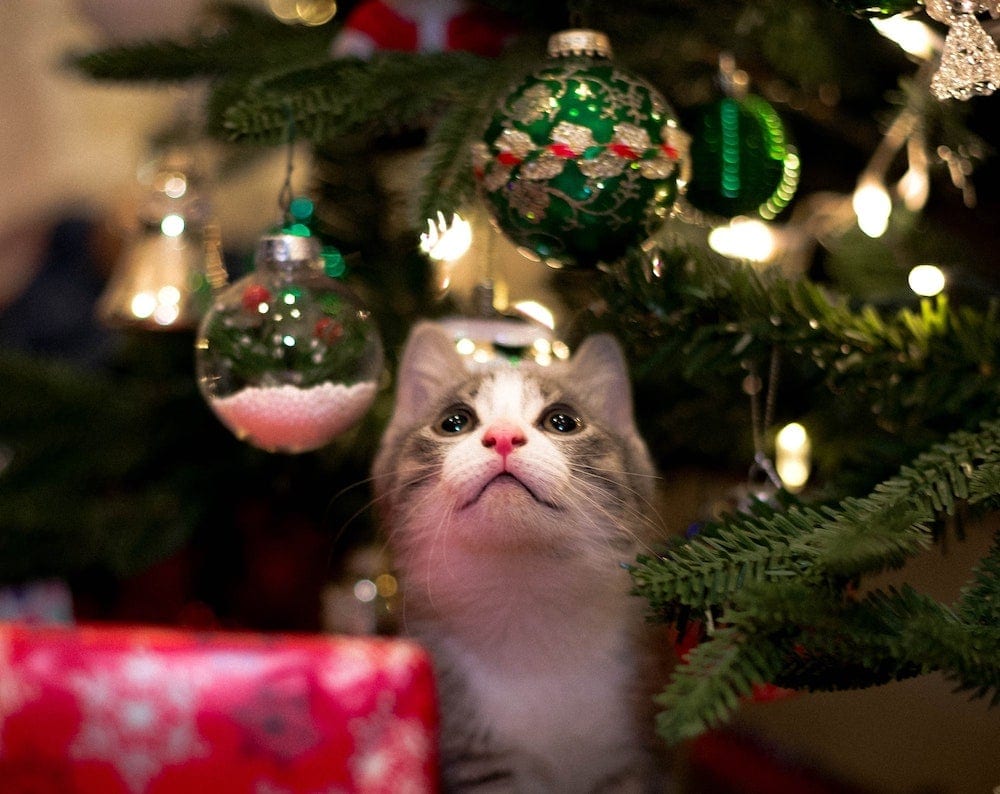How Does a Cat Carry a Kitten? Instincts, Facts & FAQ

By Misty Layne
Updated on
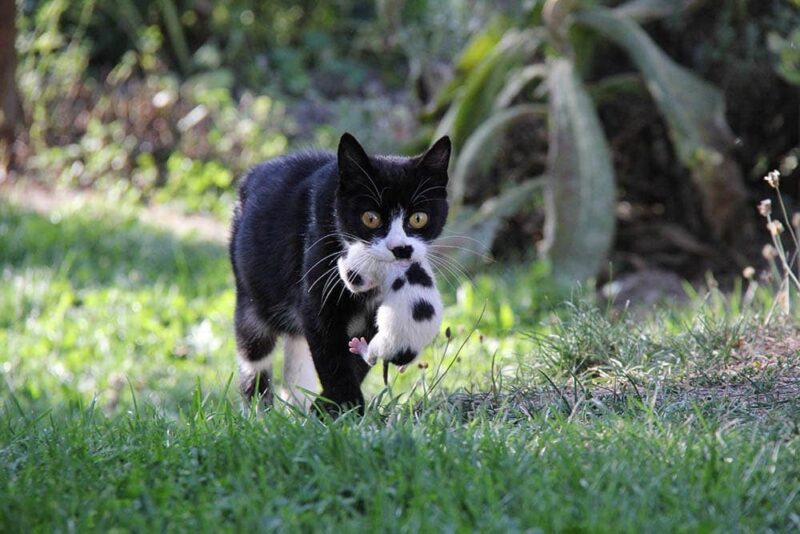
It’s easy for us to transport our kids around when needed—if they’re small, we pick them up and carry them in our arms, and if they’re bigger, they walk by themselves. But how would you carry your children around if you didn’t have the needed arms to do so? Possibly in the same way a mama cat carries its kittens around!
How does a cat carry a kitten? You’ve likely seen it happen before, but mama cat utilizes the only tool at her disposal for moving around her babies—her mouth! Yep, there’s really no other way for a cat to carry a kitten than by picking it up with its mouth. But how exactly does that work? You’d think the kittens would get hurt from moving around too much, right? And can you safely pick up and move kittens the same way mama cat does?
How Cats Carry Kittens
Newborn kittens fall into the classification of altricial animals, which simply means they aren’t capable of walking around soon after birth (as opposed to horses, for example).1 In fact, kittens don’t begin walking until they are three weeks old. So, if kittens need to be relocated before then due to a threat to the nesting area or because that area has become too small, all mama cat can do is move them herself.
To do this, mama cat will pick up kittens in her mouth, specifically by the scruff of their necks (she’s not just picking them up any which way!). The scruff is extra skin found on the back of the neck, so it doesn’t hurt the kittens to be picked up this way. And though you’d imagine that kittens would become rather squirmy when carried like this, risking injury, they don’t. And there’s actually a reason why!
Kittens instinctively know that when they are picked up to be moved, they should tuck their legs close to themselves, go limp, and cease all movement. Plus, a study showed that in humans and mice, a mother picking up her babies results in a lowered heart rate and less movement and crying.2 This indicates that little ones in different species are aware of sensation and the position their body is in when moved by mom and are made calmer by mama’s presence.
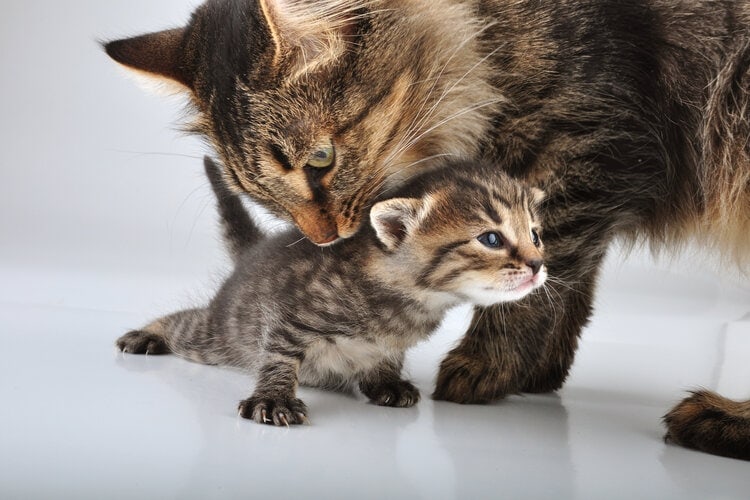
How Should People Carry Kittens?
You may be wondering if you should carry a kitten the same way its mother does, and the answer is no! You should never pick up a kitten (or cat of any age) by the scruff; even a mama cat will stop doing that after a handful of weeks. And the main reason why you shouldn’t do this is that the automatic reflex that makes kitties go limp and motionless when picked up is lost as they age. That means cats could move around and injure themselves (or you) if picked up by the scruff, and in adult cats, being scruffed can lead to anxiety and fear.
So, how should you pick up a kitten to move it, then? You’ll want to pick them up similarly to how you would a baby—with a hand supporting their chest and the other supporting their rear. Then bring the kitten in close to you (against your chest) so it’s more difficult for them to jump down or be dropped. In addition, bringing them close to your chest supports their back and offers them a better sense of safety.
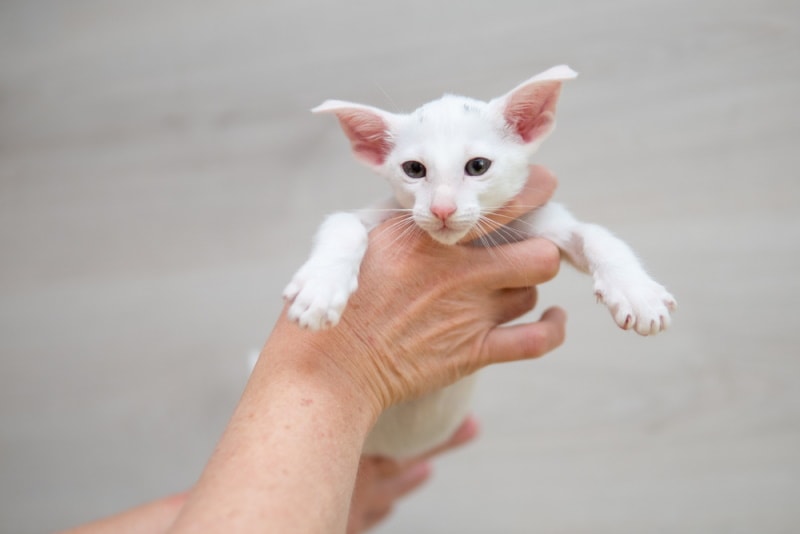
Why Is My Cat Carrying Her Kittens?
A new mama cat might move her kittens around for a few reasons, and most of them have to do with the nesting area.
- The nesting area isn’t warm enough. Because newborn kittens cannot thermoregulate until four weeks of age, it’s up to mama to keep them warm. So, if it isn’t warm enough where the kittens currently are, she’ll move them to a new spot.
- The nesting area is too small. If you’ve had kittens around before, you know they grow up quickly! That means kitties can grow too large for the area where they were born and need to be moved to a bigger spot.
- Maybe the mama cat doesn’t feel safe. If mama feels the nesting area isn’t secure enough from other pets or even people in the home, she’ll move her kittens to a safer place.
- The mother is neglecting a kitten. This is rare, but in some cases, the mama cat might move a kitten that is sick or weak away from the others and then ignore it. If this happens, you’ll need to call your vet to determine what to do next.
- Returning to nest. A mama cat may, on occasion carry just an individual kitten back to the nest if they’re ventured too far away. Often, kittens who think they are lost will let out a loud stress call, which most cats instinctively respond to by picking them up and taking them to safety.
- Instinct. Some cats instinctively choose to move their kittens when they are about 3-4 weeks of age. It is hypothesized that cats instinctively do so to minimize the odds of their kittens getting sick from staying in their old nest for too long.
Final Thoughts
Mama cats can carry their babies around by the scruff because kittens instinctively know that when picked up, they should go limp. This prevents them from being injured or dropped while being carried. However, mama cats will stop carrying kittens around like this after only a few weeks, and it isn’t a way you should pick up a kitten. Instead, pick up a kitten as you would a baby (supporting the chest and bottom) and bring it close to you, so it isn’t able to get free and injure itself.
See Also:
Featured Image Credit: Lucie-Bartikova, Shutterstock


